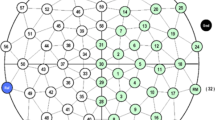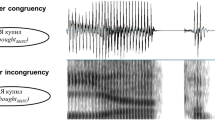Abstract
The central issue of this study concerns the claim that the processing of gender agreement in online sentence comprehension is a syntactic rather than a conceptual/semantic process. This claim was tested for the grammatical gender agreement in Dutch between the definite article and the noun. Subjects read sentences in which the definite article and the noun had the same gender and sentences in which the gender agreement was violated. While subjects read these sentences, their electrophysiological activity was recorded via electrodes placed on the scalp. Earlier research has shown that semantic and syntactic processing events manifest themselves in different event-related brain potential (ERP) effects. Semantic integration modulates the amplitude of the so-called N400. The P600/SPS is an ERP effect that is more sensitive to syntactic processes. The violation of grammatical gender agreement was found to result in a P600/SPS. For violations in sentence-final position, an additional increase of the N400 amplitude was observed. This N400 effect is interpreted as resulting from the consequence of a syntactic violation for the sentence-final wrap-up. The overall pattern of results supports the claim that the on-line processing of gender agreement information is not a content driven but a syntactic-form driven process.
Similar content being viewed by others
REFERENCES
Van Berkum, J. J. A. (1996). The psycholinguistics of grammatical gender. Published doctoral dissertation. Nijmegen: Nijmegen University Press.
Van Berkum, J. J. A., Brown, C. M., & Hagoort, P. (1999). Early referential context effects in sentence processing: Evidence from event-related brain potentials. Journal of Memory and Language, 41, 147-182.
Brown, C., & Hagoort, P. (1993). The processing nature of the N400: Evidence from masked priming. Journal of Cognitive Neuroscience, 5, 34-44.
Brown, C., & Hagoort, P. (1999). On the electrophysiology of language comprehension: Implications for the human language system. In M. Crocker, M. Pickering, & C. Clifton (Eds.), Architectures and mechanisms for language processing. Cambridge: Cambridge University Press.
Corbett, G. G. (1991). Gender. Cambridge: Cambridge University Press.
Friederici, A. D., Hahne, A., & Mecklinger, A. (1996). Temporal structure of syntactic parsing: Early and late event-related brain potential effects. Journal of Experimental Psychology: Learning, Memory, and Cognition, 22, 1219-1248.
Hagoort, P., & Brown, C. (1994). Brain responses to lexical ambiguity resolution and parsing. In C. Clifton, Jr., L. Frazier, & K. Rayner (Eds.), Perspectives on sentence processing (pp. 45-80). Hillsdale, NJ: Erlbaum.
Hagoort, P., Brown, C. M., & Groothusen, J. (1993). The syntactic positive shift (SPs) as an ERP measure of syntactic processing. Language and Cognitive Processes, 8, 439-483.
Hagoort, P., Brown, C. M., Osterhout, L. (1999). The neurocognition of syntactic processing. In C. M. Brown & P. Hagoort (Eds.), The neurocognition of language (pp. 273-316). Oxford: Oxford University Press.
Jackendoff, R. (1997). The architecture of the language faculty. Cambridge, MA: MIT Press.
Jackendoff, R. (1999). The representational structures of the language faculty and their interactions. In C. M. Brown & P. Hagoort (Eds.), The neurocognition of language (pp. 37-79). Oxford: Oxford University Press.
Kutas, M., & Hillyard, S. A. (1980). Reading senseless sentences: Brain potentials reflect semantic anomaly. Science, 207, 203-205.
Kutas, M., & Van Petten, C. K. (1994). Psycholinguistics electrified: Event-related brain potential investigations. In M. A. Gernsbacher (Ed.), Handbook of psycholinguistics (pp. 83-143). San Diego: Academic Press.
Levelt, W. J. M. (1989). Speaking: From intention to articulation. Cambridge, MA: MIT Press.
Levelt, W. J. M. (1999). Producing spoken language: A blueprint of the speaker. In C. M. Brown & P. Hagoort (Eds.), The neurocognition of language (pp. 83-122). Oxford: Oxford University Press.
Marslen-Wilson, W. (1989). Access and integration: Projecting sound onto meaning. In W. Marslen-Wilson (Ed.), Lexical representation and process (pp. 3-24). Cambridge, MA: The MIT Press.
Mitchell, D. C., & Green, D. W. (1978). The effects of context and content on immediate processing in reading. Quarterly Journal of Experimental Psychology, 30, 609-636.
Münte, T. F., & Heinze, H. J. (1994). ERP negativities during syntactic processing of written words. In H. J. Heinze, T. F. Münte, & G. R. Mangun (Eds.), Cognitive electrophysiology. Boston, MA: Birkhauser.
Münte, T. F., Heinze, H. J., & Mangun, G. R. (1993). Dissociation of brain activity related to syntactic and semantic aspects of language. Journal of Cognitive Neuroscience, 5, 335-344.
Münte, T. F., Matzke, M., & Johannes, S. (1997). Brain activity associated with syntactic incongruities in words and pseudo-words. Journal of Cognitive Neuroscience, 9, 300-311.
Osterhout, L., & Holcomb, P. J. (1992). Event-related brain potentials elicited by syntactic anomaly. Journal of Memory and Language, 31, 785-806.
Osterhout, L., & Holcomb, P. J. (1993). Event-related potentials and syntactic anomaly: Evidence of anomaly detection during the perception of continuous speech: Language and Cognitive Processes, 8, 413-438.
Osterhout, L., Holcomb, P. J., & Swinney, D. A. (1994). Brain potentials elicited by gardenpath sentences: Evidence of the application of verb information during parsing. Journal of Experimental Psychology: Learning, Memory, and Cognition, 20, 786-803.
Osterhout, L., McLaughlin, J., & Bersick, M. (1997). Event-related brain potentials and human language. Trends in Cognitive Sciences, 1, 203-209.
Osterhout, L., & Mobley, L. A. (1995). Event-related brain potentials elicited by failure to agree. Journal of Memory and Language, 34, 739-773.
Rugg, M. D., & Coles, M. G. H. (1995). The ERP and cognitive psychology: Conceptual issues. In M. D. Rugg & M. G. H. Coles (Eds.), Electrophysiology of mind: Event-related brain potentials and cognition (pp. 27-39). Oxford: Oxford University Press.
Schriefers, H., Friederici, A. D., & Kühn, K. (1995). The processing of locally ambiguous relative clauses in German. Journal of Memory and Language, 34, 499-520.
Author information
Authors and Affiliations
Rights and permissions
About this article
Cite this article
Hagoort, P., Brown, C.M. Gender Electrified: ERP Evidence on the Syntactic Nature of Gender Processing. J Psycholinguist Res 28, 715–728 (1999). https://doi.org/10.1023/A:1023277213129
Issue Date:
DOI: https://doi.org/10.1023/A:1023277213129




